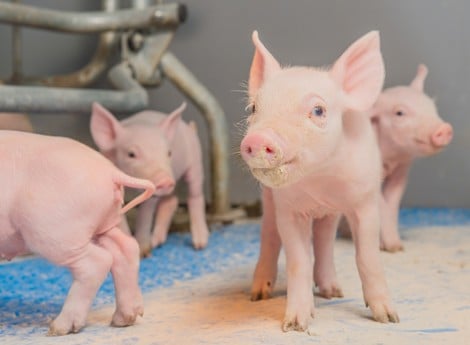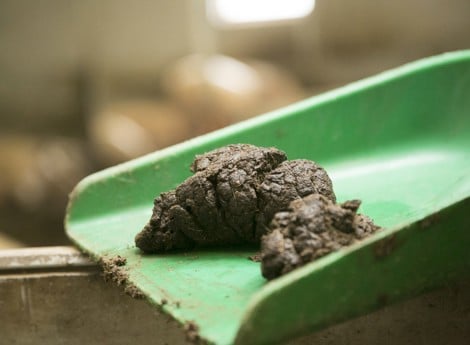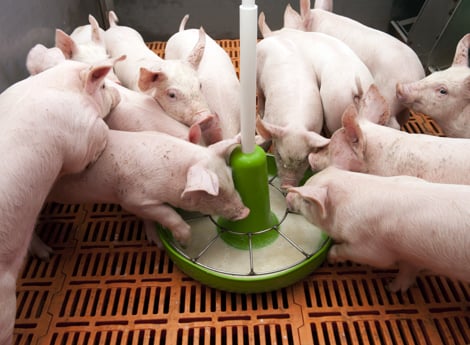Saliva analysis to detect respiratory disorders
At many farms, when suddenly health problems occur, the pig farmer and the veterinarian look for solutions without having access to the results of any analyses. Analyses generally takes too long and pig farmers often consider them too expensive because they yield little result. The alternative for respiratory disorders is to conduct a saliva analysis for piglets and growers. This is cheaper method and the results are quickly available.

Analyses on a pig farm may be carried out for different reasons. An example is the systematic preventive monitoring of respiratory disorders through means of blood analysis. This practice has become more common in recent years. This way of monitoring identifies the pathogens that were present on the farm in previous months. This makes it possible to adjust the vaccination strategy. Blood analysis is less frequently used as a tool in case of acute respiratory problems. The reason is that it requires two blood samples, at least three weeks apart. Furthermore, the results generally become available after the health issues have subsided.
Types of Analysis
There are various analyses that can be performed in case of respiratory infections.
The presence of perpetrators of respiratory problems such as PRRS and Circovirus Type II among young piglets is undesirable. They can significantly undermine health at the beginning of the fattening period.
1. Postmortem Examination
A postmortem examination can be performed on several deceased animals. A postmortem examination quickly provides useful information. However, it is important that a sufficient number of animals and the right animals with the typical syndrome are submitted for examination. This way you can conclude quickly and with a reasonable degree of certainty that the pig died of APP, for example. However, this always begs the question as to whether another preliminary virus infection was the true cause of the problems. To discover whether a virus was involved, the examination of animals who have only recently become ill is required.
2. Blood Analysis
Blood analysis is generally focused on indicating the presence of antibodies generated several weeks after the illness. It often takes long to receive the results. Furthermore, piglets often still have the maternal antibodies passed on in the colostrum in their bloodstream. This means that an analysis to determine the presence of antibodies against specific illnesses is not really useful for young piglets.
3. PCR
A form of diagnosis that is gaining popularity is focused on demonstrating the presence of the pathogen (bacterium or virus) itself, rather than demonstrating the presence of antibodies. PCR (Polymerase Chain Reaction) is an example of such a diagnostic technique. Increasingly more laboratories are developing PCRs for specific pathogens. A PCR demonstrates that the pathogen is present in the sick animal. The presence of maternal antibodies in piglets is not a problem here. The PCR, for example, is used when piglets are given a lung rinse.
The PCR identifies all key causes of respiratory disorders such as PRRS, flu, the circovirus, mycoplasma and APP.
However, the method is not well-suited for the identification of diseases that have passed through the herd. As soon as the animals are again healthy, the excretion of pathogens stops and the PCR then no longer detects any pathogens.
Saliva Diagnostics
In case of the saliva diagnostic technique, the PCR identifies the bacterium or virus itself. This is possible for all key pathogens that cause respiratory disorders. The method works as follows: cotton strings are suspended from the pen partitions in a compartment where the pigs have respiratory problems. The piglets or growers are allowed to chew on the cotton strings for half an hour. Cotton absorbs a lot of water or saliva. After half an hour the cotton strings are drenched with saliva. The samples are sent to a laboratory. The results follow approximately one week later. The collection of saliva samples is extremely simple. Furthermore, a large group is sampled all at once. The results arrive before the coughing problems have subsided.

Table 1 Saliva diagnostic test: sample report of findings for a farm with piglets and growers. In this case, Circo II and PRRS are more common among the older animals, and APP and influenza are more common among the younger animals. No mycoplasma was detected.
Additional Information
Like blood analysis, the saliva diagnostic test supplies important information to supplement a postmortem examination. Most respiratory problems start off with a limited number of pathogens that are easily detected by the PCR technique. It is good to be aware of the fact that the results of any examination only shows that the animal has been in contact with the pathogen. It does not show which pathogen is responsible for the disease.
Conclusion
The PCR saliva diagnostic test is an extremely simple but welcome addition to blood analysis or postmortem examinations. It quickly determines which pathogens play a role in respiratory disorders among piglets or growers.
If you want to learn more about this topic, please contact your local De Heus' specialist






